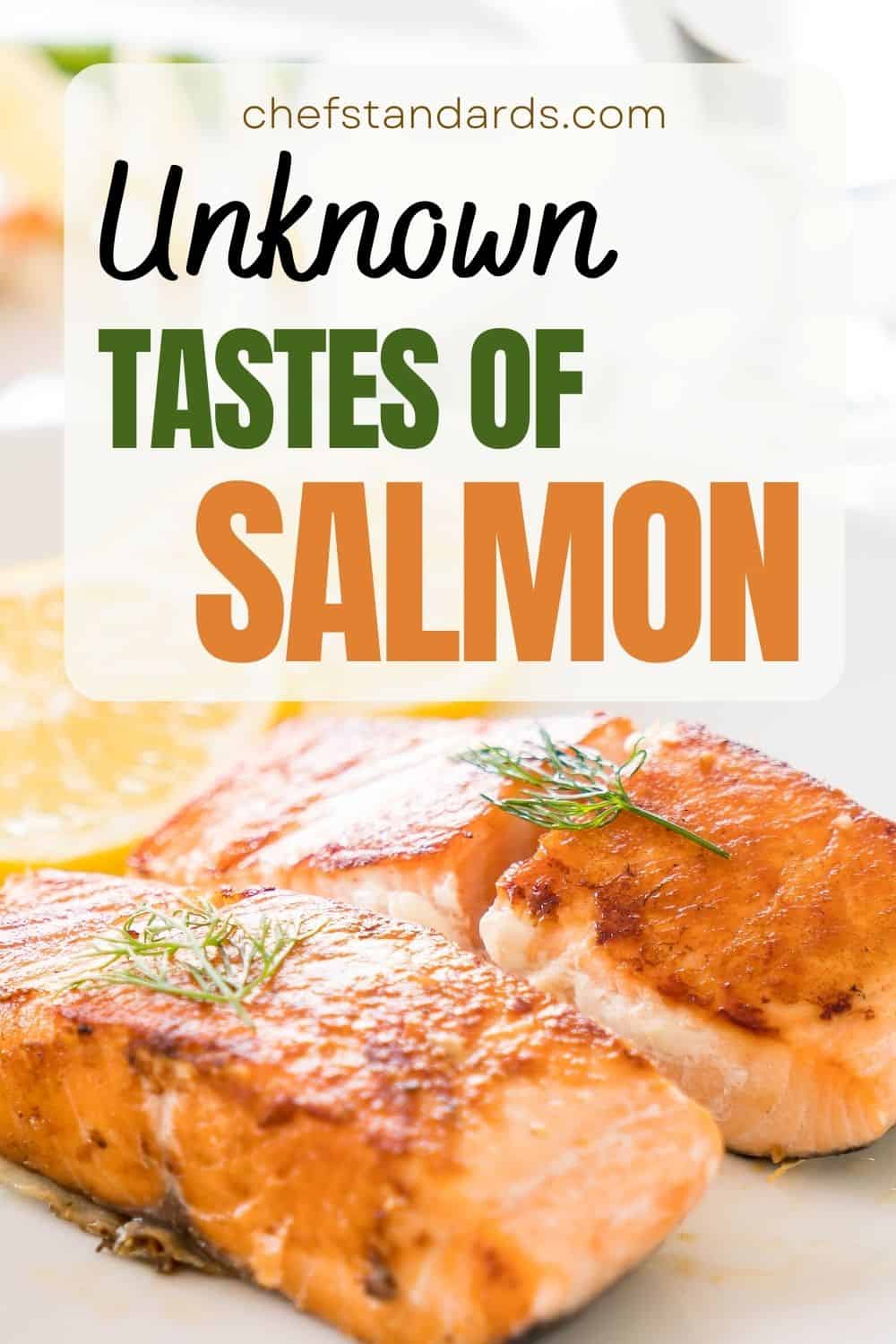Not all food-lovers like fish. Sometimes the reason lies behind the distinctive fishy taste, or maybe lack of flavor. Some people are not fans of fish because of the flaky texture.
However, there are always exceptions and I can fairly say that salmon is one of them. It is a type of fish that can be enjoyed raw or cooked, and you can find it in almost any restaurant, as well as in many grocery stores. In short, it is very popular.
There are many reasons for that and one of them is definitely its taste. But, what does salmon taste like?
Well, in general, it can be said that it is a mild-flavored fish that is slightly oily.
But, the exact flavor profile can vary based on different factors, including type, diet, whether it is cooked or not, as well as the cooking method.
What Does Salmon Taste Like When Raw?
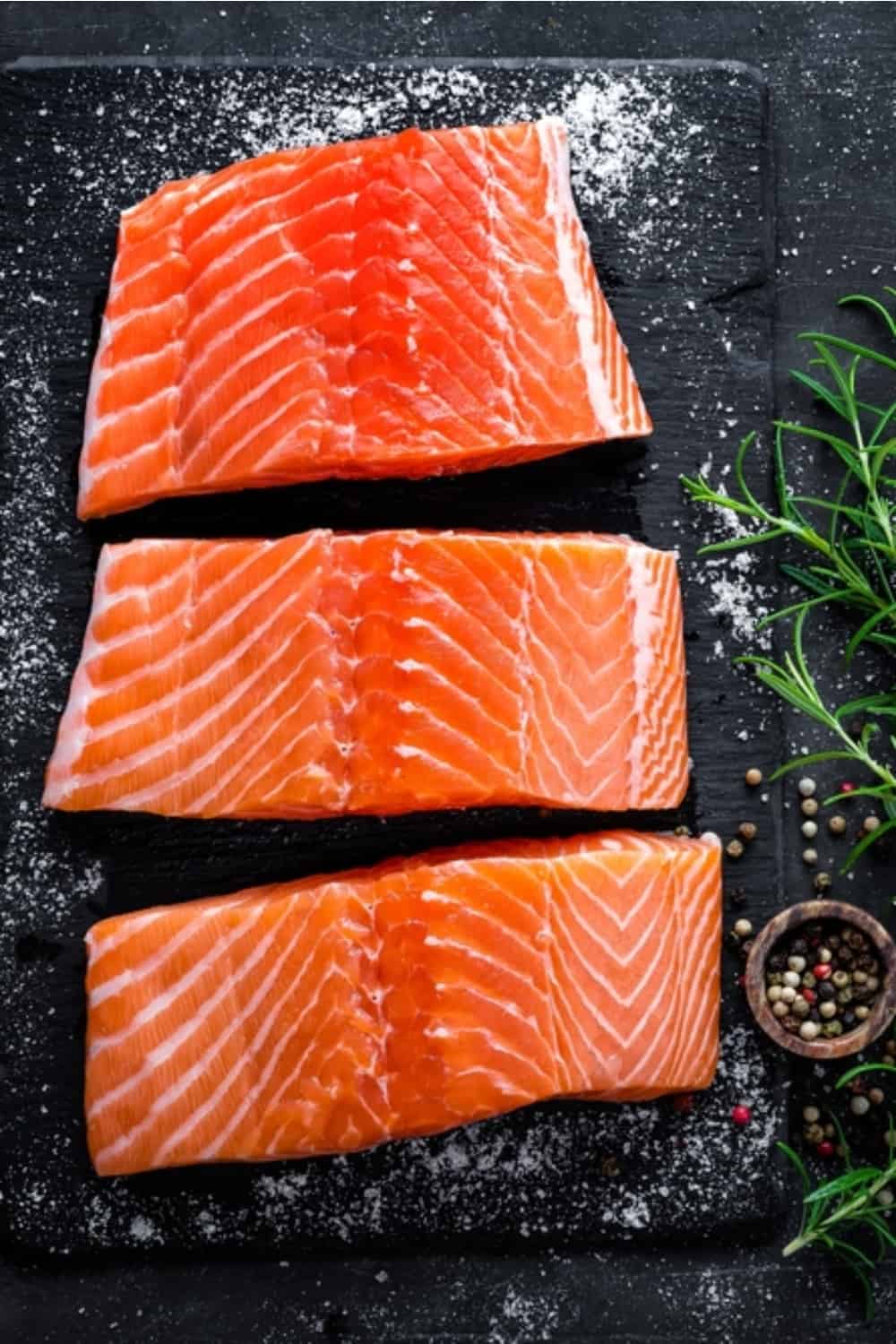
As I already said in the introduction, one of the main factors that determine the taste of salmon is whether it is cooked or not.
Salmon is one of those types of fish that can be enjoyed fresh and, indeed, that is one of the most popular ways to eat it. Alongside raw tuna, it is commonly incorporated into one of the most popular dishes in the world known as sushi.
Some other delicious dishes that incorporate this healthy fish include sashimi, poke, gravlax, and many others.
Once you decide to enjoy fresh salmon, you can expect a mild, buttery flavor with a slightly sweet taste.
From my own tasting experience, I would describe it as a delicate, clean, and refreshing taste with a soft and silky texture of the flesh that tends to melt in the mouth.
However, there are some differences between the flavor profiles of salmon based on their diet, i.e. whether they are eating in wild seas or fed in fish farms. So let’s see what those differences are.
Wild-Caught Salmon Vs Farmed Salmon Taste
When previously describing the flavor profile of raw salmon based on my experience from one fish restaurant, I was describing farmed salmon. And it is highly likely that you too will eat it once you order it in a restaurant.
However, although there are no huge differences, the taste and texture of wild salmon are indeed slightly different.
Aside from the fact that it possesses more quality because it is feeding naturally, it also has a more pronounced, robust flavor compared to framed salmon, which has a milder and less distinctive flavor.
It can also be said that wild salmon has a richer, meatier taste with subtle sweetness, while farmed salmon can taste more buttery.
When it comes to texture, wild salmon is typically firmer and leaner, while salmon raised at farm tends to be more fatty with a softer texture.
From all this, it can fairly be concluded that farmed salmon is slightly more appealing because of its softer texture and less distinctive flavor, but it is not always about the flavor.
Wild salmon possess more quality, especially in terms of health and nutrition.
Different Types Of Salmon And Their Flavor Profiles
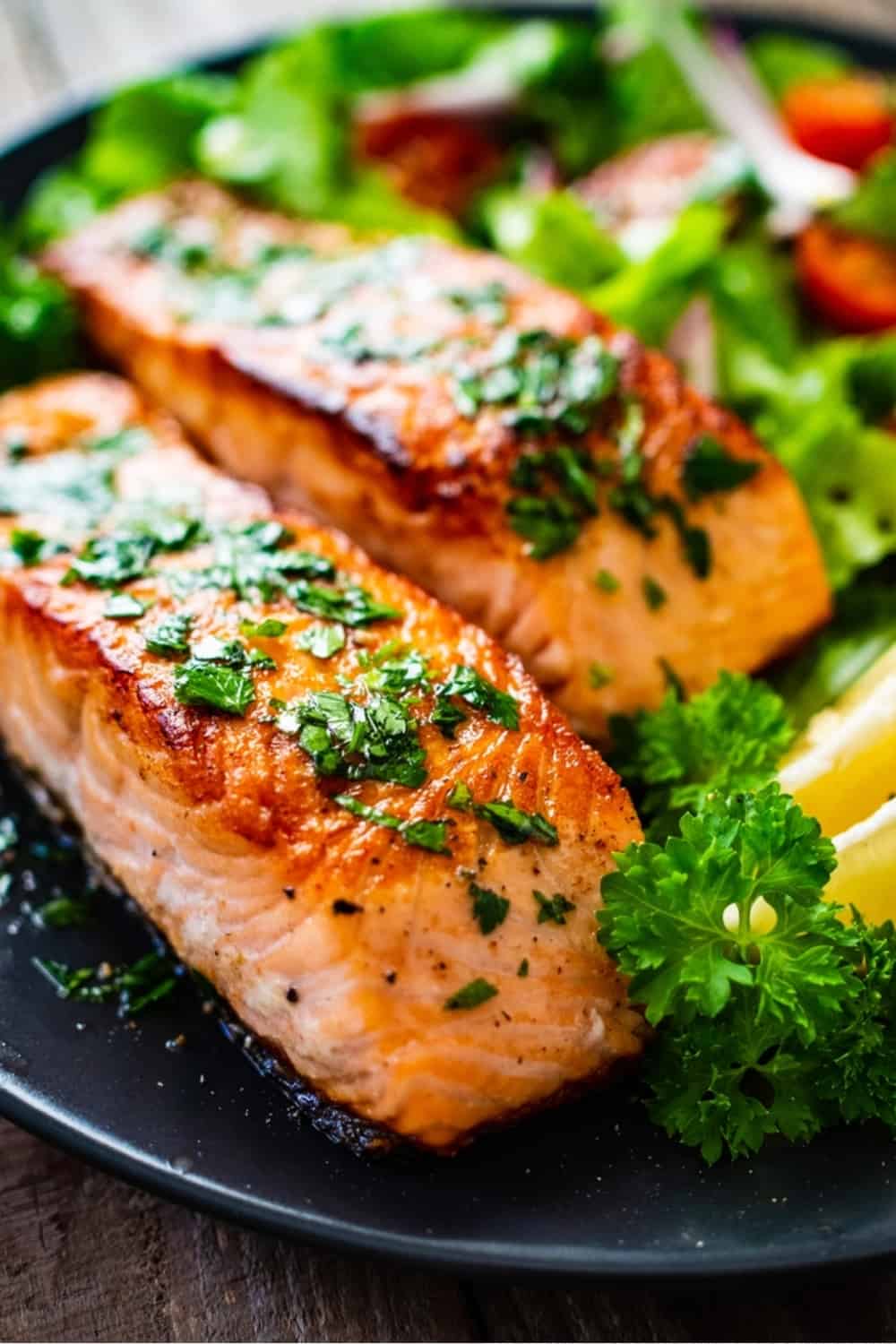
The third factor that determines the exact flavor profile of salmon is its type. There are no big differences between them, but some types are indeed more flavorful than others and that is important to be aware of when buying or ordering one.
Chinook (King Salmon)
It is no surprise that this type is called King salmon, considering that it is the most flavorful of all, and consequently the most expensive as well.
Chinook or King salmon is also the biggest salmon out there because it can weigh over 100 pounds. Also in length, it can be over four feet long.
You can recognize it by its typical pinkish-orange color, as well as its very high fat content.
It has a rich and buttery flavor and its texture is quite soft, which makes it very appealing to many people, even those who are not typical fans of fish.
Coho (Silver Salmon)
Coho salmon tastes similar to King salmon. It also has a rich flavor with the addition of a slightly sweet taste.
However, I have to emphasize that it is quite milder compared to other types of salmon. That makes it a popular choice for those who are new to eating salmon or who prefer a less pronounced fishy taste.
When it comes to texture, Coho salmon has a somewhat firmer texture than King salmon, and it can be described as firm and flaky.
But once you cook it, Coho salmon becomes more tender and slightly more delicate in taste, compared to other types.
Humpback (Pink Salmon)
As you can conclude from its name, Humpback salmon is typically pale pink in color, but it actually got its name because of a distinctive hump on its back during spawning.
This type of salmon is famous for its very low fat content that contributes to its milder flavor.
Because of that, it is not a favorite type among salmon lovers, but it can be a good option for those of you who are new to eating salmon.
Once you cook it, it tends to have a tender and delicate texture, but because of its lower fat content, it can also be easily overcooked, so you must pay attention to that.
The good thing is that it is less expensive and more available in the market, making it a popular choice for those of you who are chasing after budget-friendly fish.
Sockeye (Red Salmon)
Sockeye, also known as red salmon or kokanee, is a type of salmon that is typically bright red in color, which is a result of the pigments from the krill and other crustaceans it eats.
Similar to King salmon, it has a very high fat content, and consequently richer flavor.
Its flavor is stronger and more pronounced when compared with most other types of salmon, and it also has a quite meaty texture.
When cooked, red salmon has a firm texture that is flaky and moist, making it a great option for many cooking methods, including smoking, grilling, and baking.
Chum (Dog Salmon)
Chum salmon, also known as dog salmon, is a species of salmon that is found in the Pacific Ocean, and it is one of the most abundant species.
Out of all types of salmon, Chum salmon has the lowest fat content. It is also the least known type.
It is specific for its very mild flavor, with a subtle sweetness and a slightly earthy taste.
Once cooked, chum salmon has a firm and meaty texture that is less flaky than other species of salmon.
It is not a favorite type among salmon fans because of its mild flavor and very low fat content, but it can be perfect for those who don’t like the bold flavors of salmon.
Atlantic Salmon
If you are a true fan of salmon, then this one might be for you.
Atlantic salmon has a rich and buttery taste, with slightly sweet and nutty hints. Compared to other types, it has a more pronounced flavor, making it a popular choice for bold and flavorful dishes.
In general, it has a meaty texture. Once cooked, Atlantic salmon has a firm texture that is flaky and moist. Since it has a quite high fat content, its flavor becomes even richer once cooked.
What Does Cooked Salmon Taste Like?
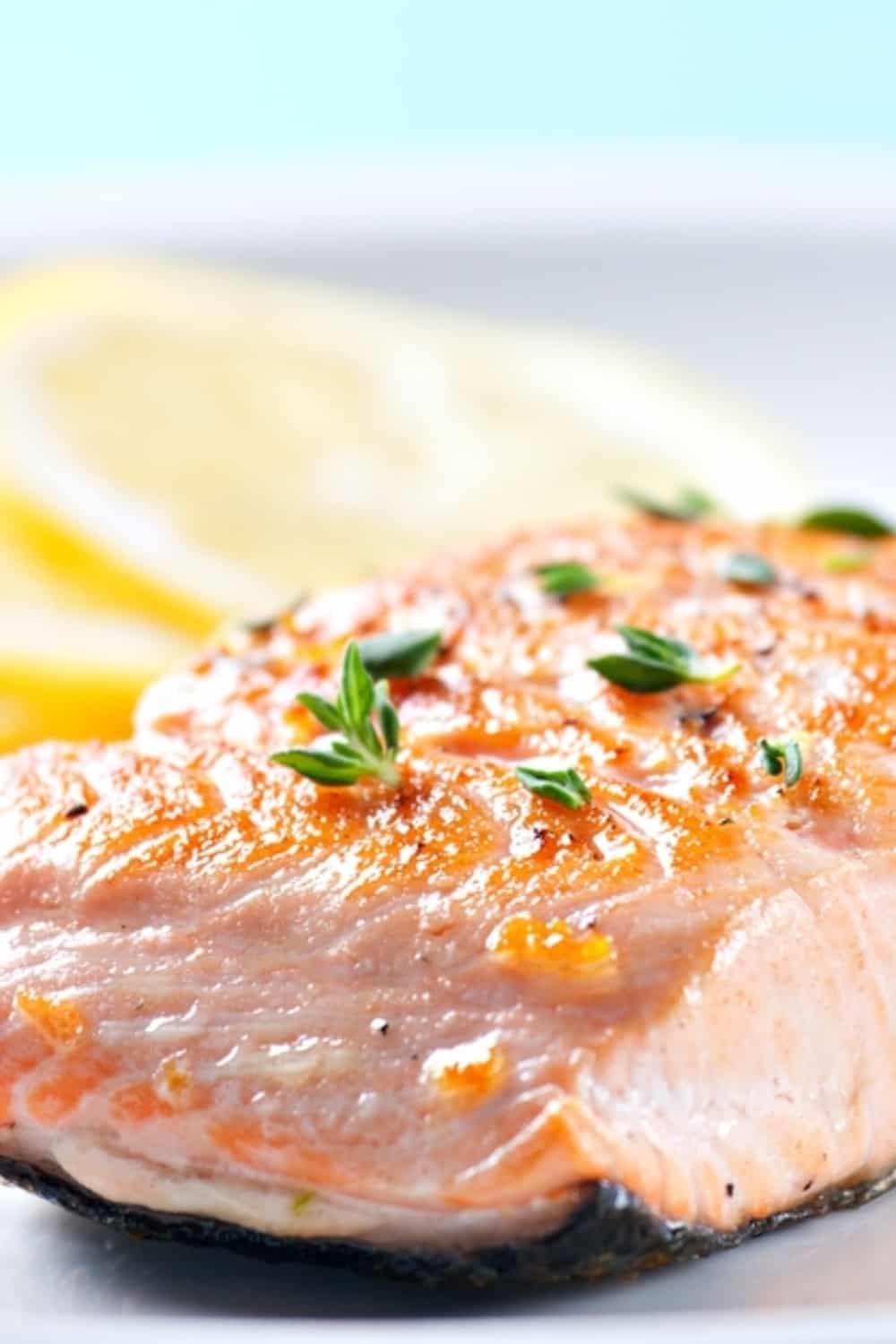
Although I already briefly explained the flavor profiles of all types of cooked salmon, I also want to explain to you all the cooking methods of salmon and how they affect their taste and texture.
Smoked Salmon
Smoking is one of the most popular cooking methods for salmon. In order to be smoked, the salmon needs to be cured first.
It is typically soaked in a brine solution, and then rinsed, dried, and oiled before the smoking process.
It is smoked under low temperature until its flavor becomes both rich and savory, with a slightly salty and smoky taste.
When it comes to texture, smoked salmon is firm and slightly oily, with a delicate flakiness that melts in your mouth.
Baked Salmon
Baking is also a popular cooking method for salmon. The taste of baked salmon is typically milder than that of smoked salmon, but it is also more delicate and still quite rich.
When baked, the salmon’s natural oils and fats are released, creating a buttery and rich flavor.
The texture is typically tender and moist, with a slight flakiness that easily melts in your mouth.
However, you won’t just bake your salmon without anything. Various seasonings are usually used to enhance the flavor, including lemon, garlic, rosemary, as well as olive oil.
Baked salmon also pairs well with various other types of food, including roasted veggies, potatoes, and rice, and can be served with a light sauce or dressing for additional flavors.
Pan-Fried Salmon
This is definitely my favorite way to prepare salmon because it has a specific flavor and texture, when compared with other cooking methods.
When pan-fried, the exterior of the salmon develops a crispy and caramelized crust while the inner flesh remains tender and moist, which is a perfect combination.
The flavor is quite rich and buttery, with a slightly nutty taste from the seared skin. Also, the caramelization process makes pan-fried salmon sweeter, which is a perfect flavor twist in my opinion.
You can also add some seasonings to your pan-fried salmon, including salt, pepper, butter, and some olive oil to add some additional flavor value.
If you want to know how to make a perfect pan-fried salmon filet, check out the video below.
Pan-Seared Salmon
If you pan-sear your salmon, you will get the similar result to pan-fried salmon. In this cooking method, salmon is cooked at a high temperature for a shorter period of time, which results in a crispy exterior, and a tender, juicy inner flesh.
The flavor of pan-seared salmon can be described as rich, buttery, and slightly nutty, with a delicate sweetness.
When pan-searing your salmon, you can add some seasonings, such as salt, pepper, and various herbs like rosemary and thyme to create a more complex flavor profile.
The type of oil is also important. Butter or olive oil will add richness and depth to the flavor, while coconut oil can impart a slightly tropical taste.
Oven-Roasted Salmon
Oven-roasted salmon has a somewhat similar flavor to baked salmon.
The flavor is mild and delicate and the texture is typically tender and moist, with a slight flakiness.
The salmon’s natural oils and fats are also released, which creates quite a rich buttery flavor.
When I cook salmon in the oven, I usually add only pepper and salt to increase the flavor. However, you can also add some other ingredients including lemon, garlic, rosemary, and dill (dill weed or dill seed) to make it more complex.
Grilled Salmon
When salmon is grilled, it develops a slightly crispy exterior while remaining juicy and tender on the inside.
The flavor is rich and buttery, with a slightly smoky taste, which is logical since it is cooked over the flame.
You can cook your salmon filet on the grill or a cedar plank. It is best to season it with salt and pepper and grill skin-side down.
If you are up to more amazing flavors, you can also mix honey and brown sugar and brush the mixture over the salmon before grilling. This mixture will add that sweet twist to your grilled salmon.
Poached Salmon
If you want a light and refreshing fish meal, your best bet is to poach the salmon. In order to do that, you will have to submerge your salmon into a simmering pot of water and let it cook for a few minutes.
The result will be a delicate and mild flavor that can be described as light and refreshing, with a hint of sweetness.
You can also add some seasonings, including salt, pepper, and herbs like parsley and dill to provide it with additional flavors.
I also have to emphasize that poached salmon is usually served chilled, which makes it a refreshing and light option for meals.
Canned Salmon
Canned salmon is relatively cheaper than the fresh version, so many people tend to buy it in order to enjoy those specific salmon flavors.
Unfortunately, canned salmon tends to be very mild and quite bland in flavor because the canning process strips away some of the natural flavors of the fish.
That is especially the case if the salmon is soaked in water. Canned salmon that’s been soaked in oil will have a stronger flavor and an oily taste to it.
Nonetheless, you can use canned salmon in recipes such as salmon patties or salmon cakes, as well as in various salads, pastas, and sandwiches.
What About The Flavor Profile Of Pre-Packaged Salmon?

Pre-packaged salmon has a somewhat different flavor and texture compared to fresh salmon, although it is not anything significant.
The flavor is different mainly due to the added preservatives and the way it was sliced during the manufacturing process.
Smoked pre-packaged salmon tends to have quite a distinctive smoky flavor that is often paired with a salty and savory taste, while cooked salmon may have a milder flavor.
The texture can vary depending on how it was packaged. For example, vacuum-sealed salmon has a firmer texture than fresh salmon because it is compressed in the packaging process.
All in all, it is always better to choose fresh salmon over pre-packaged versions because it retains natural flavors and is healthier since it does not contain any additives.
Does Salmon Taste Fishy?
Since it comes from the sea, just like any other type of fish, salmon does taste fishy to some extent.
The good news is that its flavor is not overly fishy, especially when compared to some other types of fish, including mackerel, sardines, tuna, and others.
However, whether salmon is wild or farmed can also influence the level of fishy taste that it provides. Wild salmon is typically stronger in flavor, so it can have a slightly fishier taste, compared to the milder farmed salmon.
However, if you cook salmon the right way, even the slightly fishy taste will probably disappear. You just don’t want to overcook it because that can cause it to become dry and have a stronger fishy taste.
Undercooked salmon is also not a great idea because its smell can be fishier and sometimes quite unpleasant, or even risky for your health.
How To Make Salmon Taste Milder?
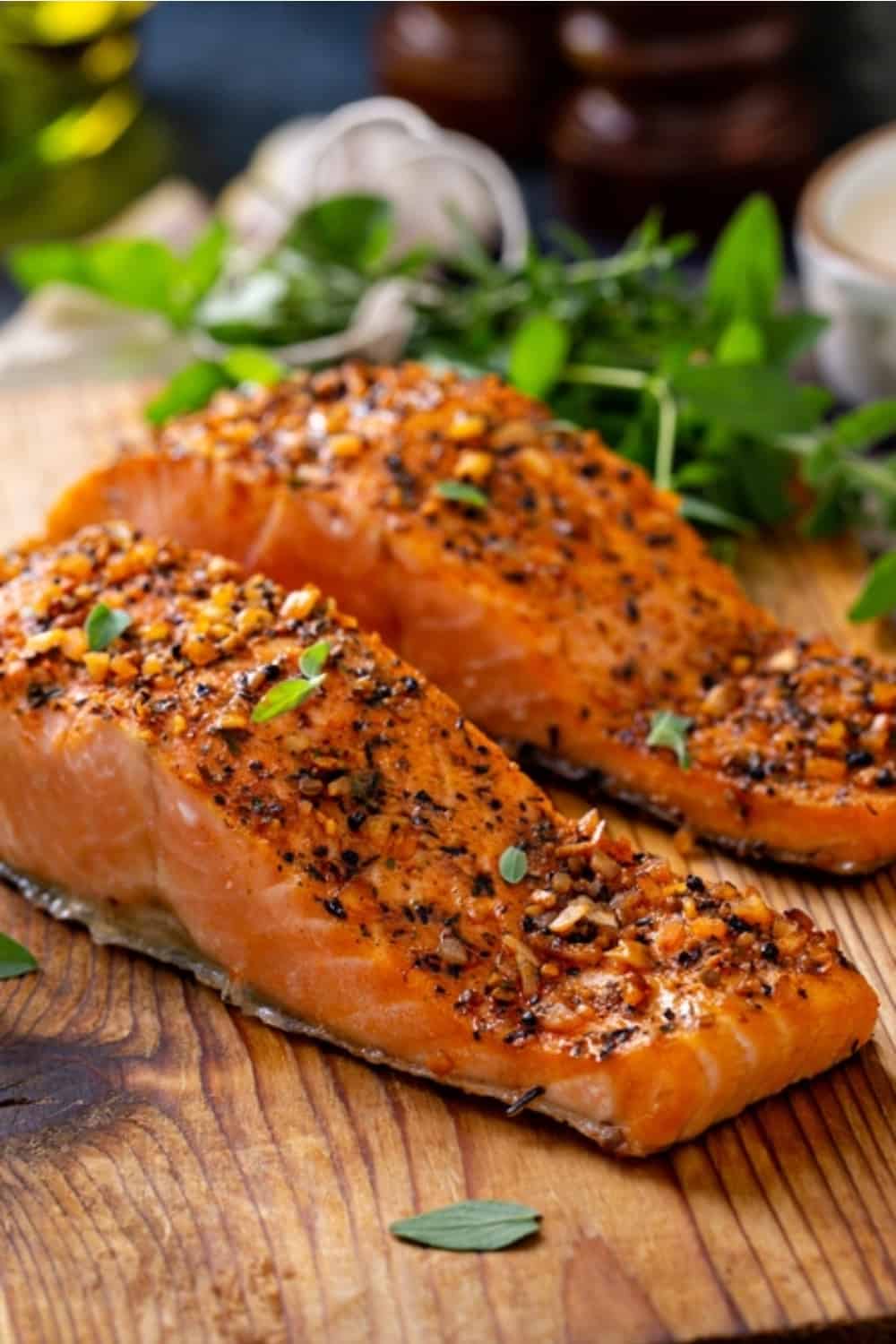
As I already mentioned, salmon is a type of fish that has a quite mild flavor compared to other types. However, it still does have a slightly fishy taste that isn’t appealing to everyone.
Fortunately, there are ways to mask those flavors and make salmon taste milder.
• Go With A Milder Type Of Salmon: The first and most obvious way to avoid stronger flavor of salmon is to choose the milder type.
Choose Coho, Humpback, and Chum over King salmon and Atlantic salmon.
• Get Rid Of The Skin: Out of all parts of salmon, the skin has the strongest flavor. So removing it can make it taste milder.
• Marinate It: Marinating salmon can help mask those fishy flavors very well. You can marinate salmon in various ways, but my recommendation is to use a mixture of soy sauce, rice vinegar, and honey.
This will provide it with a nice combo of sweet and savory flavors and stop those fishy flavors from disturbing your taste buds.
• Use Lemon Juice: In order to mask those unpleasant flavors, you can simply squeeze some fresh lemon juice over your salmon, and its acidity will do the job.
• Rinse It In Cold Water: The simplest way to make your salmon taste milder is to simply rinse it in cold water for a few minutes before it is ready for cooking.
• Soak It In Milk: Aside from the fact that it will make your salmon more tender, similar to soaking chicken in milk, soaking salmon in milk will also help to remove those fishy flavors.
Milk contains proteins that can bind with the volatile organic compounds that contribute to the fishy taste. Those proteins will attach to the fishy compounds and remove them from the fish.
So, all you have to do is to soak your salmon in milk for about 30 minutes before cooking and you are good to go.
You can also use buttermilk if you want to achieve a tangier flavor and a stronger tenderizing effect.
How To Recognize Bad Salmon Based On Its Flavor?
You now know in detail what is the flavor profile of fresh and cooked salmon. However, it is also important to be aware of the taste of bad salmon. Sometimes, this is much more important indeed.
First, salmon does taste fishy to some extent when it is fresh, but if you notice that it is too fishy, that might be a sign that it is no longer fresh, i.e. it may be starting to spoil.
However, if it takes on a sour or acidic taste, it is best to throw it out. This is because that acidic taste comes from bacteria that have multiplied in the fish, and you all know that bacteria can cause food poisoning or foodborne illness.
I also have to say that a slimy texture is another sign of spoiled salmon. The flesh of the fish breaks down as it spoils, releasing moisture and creating a slimy film on the surface.
